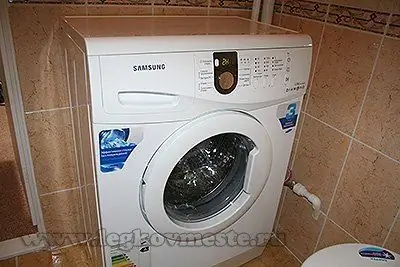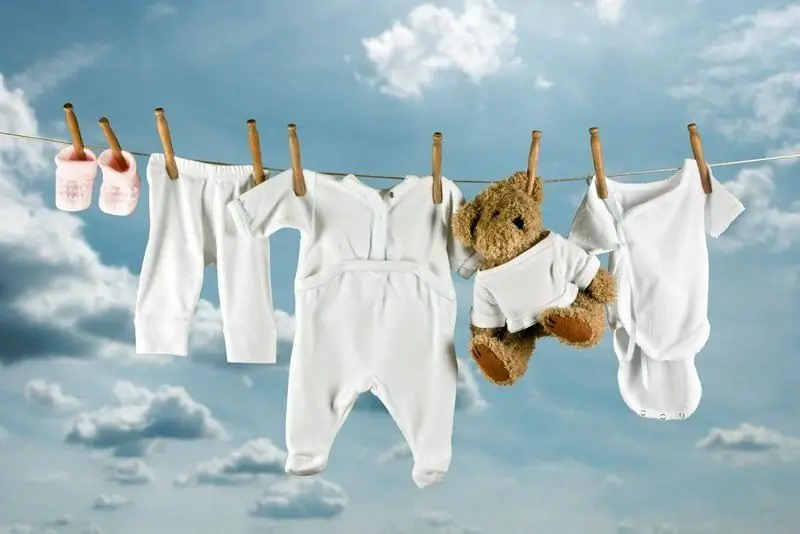
Table of contents:
- Author Bailey Albertson [email protected].
- Public 2023-12-17 12:53.
- Last modified 2025-01-23 12:41.
Note to the hostess: how to properly wash a feather pillow

A good pillow will ensure a healthy, sound sleep. The softer it is, the more comfortable and pleasant it is to sleep on it. But is that enough? A pillow stuffed with natural feathers requires special care. Today we'll show you how to wash feather pillows at home.
Several features of washing feather pillows
Some housewives believe that for the purity of a pillow stuffed with natural down and feathers, it is enough to change the pillowcase in a timely manner, and once every few years - the pillow. This is fundamentally wrong. A bird's feather very easily and simply absorbs dust, sweat, dirt, and all this, in turn, attracts dangerous parasites. The most frequent inhabitants of feather pillows are dust mites, whose vital activity can cause allergies and respiratory diseases in humans.

Dust mites are dangerous organisms that grow in old pillows and can cause allergies or asthma
The easiest way is to take your pillows to a dry cleaner, where the feather will be perfectly cleaned, processed and assembled into a new pillow on special equipment using the appropriate means. But we do not always have such an opportunity. Moreover, it is not so difficult to wash a feather pillow yourself. You need to know some of the subtleties of this procedure, and besides, washing at home has its advantages:
- the family budget is significantly saved;
- the quality of the work done is beyond doubt;
- you don't need to carry pillows somewhere.
You can wash your feather pillow by hand or in the washing machine.
You can add perfume to the water, but keep in mind that highly scented synthetic products can cause headaches and interfere with restful sleep. It is better to use essential oils of natural origin: lavender, orange or cypress, just a couple of drops for the entire amount of water.
Washing the pillow by hand
Washing the pillow with your hands is quite troublesome, but quite feasible. Once upon a time, our grandmothers did this only in winter, freezing feathers and down dry in the cold. The pillows felt soft and fresh. This option is very long and does not suit us in the conditions of living in an apartment. Therefore, we suggest doing something differently.
- Purchase the right pillow material in the right amount from the store (pillow size plus 1-1.5 cm for seam allowance). It should be tight and practical. Manufactured Chinese teak works well for this purpose.
- Open the old pillow. Prepare a bath with a detergent solution beforehand. Since fluff will fly around the room when ripping, it is better to arm yourself with a vacuum cleaner in advance.
- Lower the fluff into the water slowly and gradually, so that later it will be easier to dry. Leave it on for a couple of hours, this should be enough to dissolve dirt and odors.
- Squeeze the fluff out by draining the water through a colander while rinsing under running water. Place in a new detergent solution.
- Rinse the fluff thoroughly in the solution. Drain the water again, wring out the feathers, rinse in running water and squeeze again.
The wash is over, and now it remains to dry the feathers and down for the pillow. To do this, you need a large, lightweight pillowcase. you can sew it yourself, for example, from chintz. Place feathers and down in a pillowcase, fluffing up the lumps so they don't fall off as you dry. Sew up a pillowcase or tie it in a strong knot, then spin it in the washing machine.

Dry the pillow with a washed and wrung out feather in a dry and warm place
After that, remove the pillowcase from the machine, shake it well to distribute the fluff, and hang it in a dry, well-ventilated place. While the down and feathers dry, shake them occasionally and turn them over.
Only after the down and feather are completely dry, can they fill a new napernik and sew it up. Otherwise, the pillow will be thoroughly damaged.
We use a washing machine
A washing machine can make cleaning your pillows much easier. There are several peculiarities here too.
Just as in the previous case, you should open the pillow and get the fluff and feathers out of it. You should not put all the filler in one bag. It is better to make 2-3 bags (you can use old pillowcases as them). The less filler there is in each of the covers, the better it will wash off and dry. In addition, manufacturers recommend placing at least two covers with a feather in the drum of the machine so that the load is evenly distributed and the machine does not vibrate during spinning.

You can choose any color for the pillowcase, but the fabric should be dense
If you have small feather pillows, you can machine wash them whole without having to unpick or distribute the filler among other covers. In this case, you need to put in the drum, in addition to the pillow, a couple more things, for example, towels.
Use liquid detergent for wool. Set the temperature to 30 degrees, select a down wash, program an additional spin and the maximum number of rinses.
After finishing the wash, knead the filler with your hands, flatten the covers, lay them on sheets or towels and roll them into a tight roll to squeeze out the remaining water. Then dry the fluff in covers on a radiator or a sunny balcony, whipping and shaking regularly. Drying will take you about 2 days.
You can now place the fluff in a new pillowcase and carefully double-stitch it.
Feather Pillow Washing Video
We hope our tips will help you cope with this difficult task. If you have any questions, please ask them in the comments, and also share with us your experience in washing feather pillows. Enjoy your dreams and comfort in your home!
Recommended:
Do-it-yourself Washing Machine Installation Or How To Install A Washing Machine

Do-it-yourself washing machine installation. How to install a washing machine and connect it to the water supply and sewerage system without the involvement of specialists
How And How To Wash Blood From Clothes And Linen At Home, Ways Of Washing By Hand Or In A Washing Machine + Photos And Videos

How to effectively remove fresh or old blood stains on clothes made from different fabrics? We apply folk advice in practice, using materials at home
How To Wash Sneakers In The Washing Machine And By Hand, Including White, The Nuances Of Washing + Photos And Videos

Sneakers are shoes that are comfortable and easy to wear for a walk, nature and even a date. If they get dirty, it doesn't matter. You can always wash them
The Washing Machine Does Not Open After Washing: What To Do, How To Unlock The Lock And Open The Door, Including During An Unfinished Wash

Why is the washing machine door blocked after washing. How devices of different models open. How to open the hatch on your own. What not to do. Photo and video
How And At What Temperature To Wash Clothes For Newborns, Detergents For Washing Baby Clothes In A Washing Machine And By Hand

Basic rules for washing clothes for newborns. Requirements for the composition and effect of children's laundry detergents. How to machine wash baby clothes and by hand
